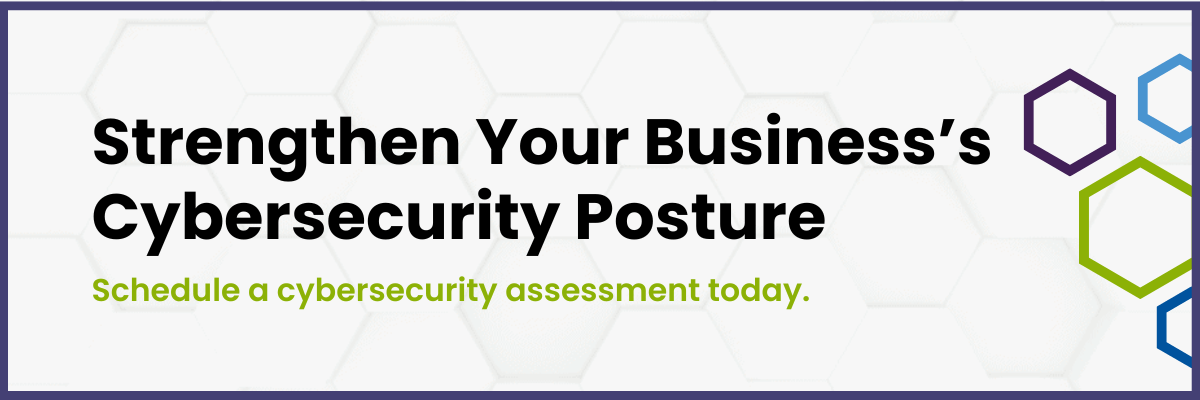October has come and with it, another Cybersecurity Awareness Month has brought valuable insights, expert perspectives, and timely reminders about protecting business data. Yet with so many statistics, new threats, and security vendors competing for attention, it can be difficult to know which lessons truly matter.
You might be feeling overwhelmed by the sheer volume of cybersecurity guidance that flooded your inbox this month, so we’ve distilled the most critical insights from Cybersecurity Awareness Month into five actionable takeaways that every business needs to understand and implement.
1. Multi-Factor Authentication Is No Longer Optional
This year’s Cybersecurity Awareness Month reinforced a message that’s impossible to ignore: multi-factor authentication (MFA) has become a requirement. With password breaches and credential theft on the rise (and over 19 billion compromised passwords readily available online) relying on passwords alone leaves critical systems exposed.
Modern MFA tools are both user-friendly and unobtrusive. Whether through app-based verification, hardware tokens, or biometrics, they add an essential layer of protection that can block the vast majority of automated attacks. Research shows MFA can prevent up to 99.9% of account-based compromises.
For organizations still weighing the perceived inconvenience of MFA, the business risk of going without far exceeds any short-term challenges during rollout. Begin with your most critical systems, then expand MFA coverage across your entire network to build a strong foundation for access security.
2. Human Behavior Remains the Weakest Link
Even with advanced security technologies in place, human behaviour remains the most common point of failure in any cybersecurity strategy – 95% of all data breaches are caused by human error. This year’s awareness campaign reinforced a familiar truth: a single click on a malicious link or a successful social engineering attempt can compromise even the strongest technical controls.
Solely investing in additional tools won’t cut it – addressing this risk demands a culture of security awareness. Effective programs go beyond compliance checkboxes by offering regular, engaging training, simulated phishing exercises, and real-world examples that help employees recognize and respond to potential threats.
Organizations that prioritize cybersecurity awareness empower their employees to act as an extension of the security team. By promoting open communication and encouraging staff to report suspicious activity without hesitation, you can turn your people from potential vulnerabilities into active defenders.
3. Ransomware Prevention Requires a Layered Approach
Ransomware remains one of the most disruptive threats facing businesses today. These attacks have become increasingly targeted, sophisticated, and damaging, impacting organizations of every size and industry. The financial and operational consequences of a successful ransomware incident can be severe, making prevention a top priority.
The key lesson from this year’s Cybersecurity Awareness Month is clear: there’s no single solution for ransomware protection. A layered defence strategy is essential; combining regular data backups, network segmentation, endpoint protection, email filtering, and ongoing employee awareness training. Each layer adds a critical barrier that reduces the likelihood of a successful breach.
Preparation is equally important. Businesses with a tested incident response plan, clearly defined communication protocols, and pre-assigned decision-makers are far better equipped to minimize disruption when an attack occurs. Regularly reviewing and testing backup restoration procedures ensures that recovery efforts are swift and effective when they matter most.
4. Supply Chain Security Can’t Be Ignored
One of the most significant themes emerging from Cybersecurity Awareness Month is the growing importance of supply chain security. Modern businesses operate in interconnected ecosystems where third-party vendors, software suppliers, and service providers have access to critical systems and data. This interconnectedness creates potential vulnerabilities that cybercriminals are increasingly exploiting.
The reality is that your organization’s security is only as strong as your weakest vendor. Many recent high-profile breaches can be traced back to weaknesses in third-party systems, underscoring the need for robust vendor risk management. Before granting access to your systems or data, conduct thorough security assessments of potential partners. Review their security policies, verify their compliance certifications, and understand their incident response capabilities.
Additionally, implement the principle of least privilege when granting vendor access. Third parties should only have access to the specific systems and data they absolutely need to perform their services. Regular audits of vendor access rights and automated monitoring of third-party activities can help identify potential security issues before they escalate into major incidents.
5. Cybersecurity Is a Business Continuity Issue
Perhaps the most important takeaway from this year’s Cybersecurity Awareness Month is the recognition that cybersecurity is fundamentally a business continuity issue, not just a technical problem. When systems go down due to a cyberattack, the impact extends far beyond the IT department. Operations halt, revenue stops flowing, customer trust erodes, and regulatory consequences may follow.
This perspective shift requires cybersecurity discussions to move from the IT manager’s office to the boardroom. Business leaders need to understand the potential financial and operational impacts of cyber incidents and ensure adequate resources are allocated to security initiatives. This includes not just technology investments, but also staffing, training, and ongoing maintenance of security systems.
Organizations that treat cybersecurity as a strategic business priority rather than a technical expense are better positioned to weather the evolving threat landscape. This means including security considerations in business planning, conducting regular risk assessments, and ensuring that security metrics are reported alongside other key performance indicators.
Moving Forward with Confidence
While Cybersecurity Awareness Month may be wrapping up, the need for vigilance and continuous improvement in your security posture never ends. The five takeaways we’ve outlined aren’t meant to be implemented once and forgotten; they represent ongoing commitments that require regular attention and refinement.
Building and maintaining a robust cybersecurity program requires expertise, resources, and constant attention to emerging threats. Many organizations find that partnering with experienced IT professionals allows them to implement comprehensive security strategies without diverting focus from their core business operations.
Need Cybersecurity Help?
If you’re ready to strengthen your organization’s security posture but aren’t sure where to start, the Anderson Technologies team is here to help. Our cybersecurity experts can assess your current security environment, identify vulnerabilities, and develop a customized strategy that protects your business without creating unnecessary complexity.
From implementing MFA and conducting security awareness training to developing comprehensive incident response plans and managing vendor risk, we provide the expertise and support you need to sleep soundly knowing your organization is protected.
Don’t wait for a security incident to take action. Contact us today to schedule a cybersecurity assessment and learn how we can help you implement these critical security measures. Let’s work together to ensure that the lessons from Cybersecurity Awareness Month translate into real protection for your organization.



